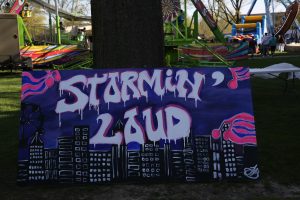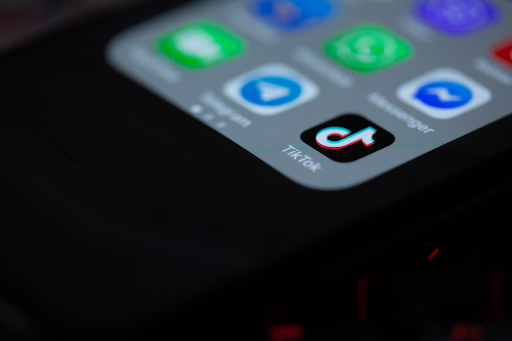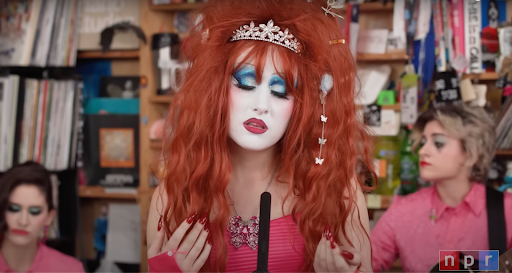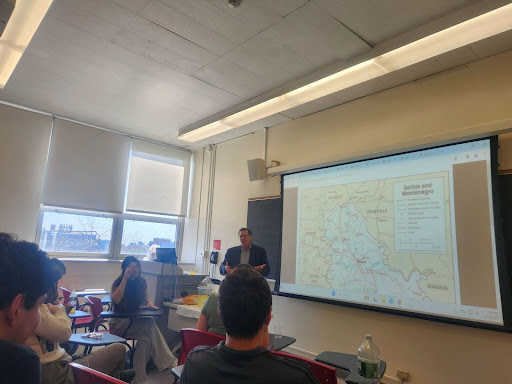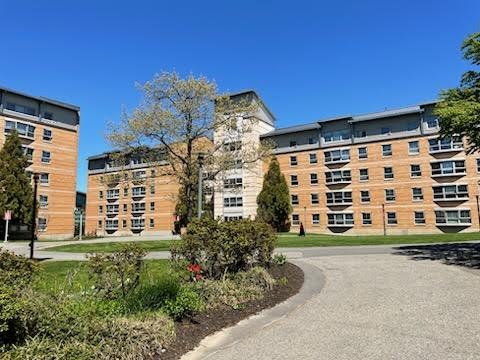St. John’s students are getting an idea of life under a communist regime, as the Dr. M. T. Geoffrey Yeh Art Gallery in Sun Yat Sen Hall hosts Darker Shades of Red: Official Soviet Propaganda from the Cold War.
The exhibit, which opened Sept. 13 and runs through Nov. 5, features propaganda poster art used in the Soviet Union from 1945 to 1991. The artwork is on loan to the University from the private collection of Gary Hollingsworth. The exhibit is sponsored by the New York Council for the Humanities.
“The University usually has about seven exhibits yearly,” said gallery director and exhibit curator Parvez Mohsin. “We try to bring things that can be used by all departments of the University… I find this period very interesting because of its art and its history.”
Mohsin said he hopes that students will see the propaganda as a way in which people and governments have pointed out their differences and criticized others in a non-violent way.
“It was a peaceful way to go about making our comments about one another,” he said. “I realized it would be an excellent thing to bring to the University.”
The entrance to the exhibit includes a wall painted entirely red and emblazoned with the title of the exhibit in gold. From there, the show flows into a room featuring a wall of anti-western and anti-American propaganda.
“This is what the Soviets thought of us,” Mohsin said.
On the wall opposite the anti-western posters are idealized posters of what the Soviets aspired to, with quotes such as “Our country must become the most educated and cultured in the world,” and “The borders of the Soviet Union are sacred and inviolate.”
The rest of the exhibit includes posters commemorating specific dates and events in Soviet history, or leaders or principles which were given special reverence in Soviet culture. In a separate room were pins, postcards, sculptures, and a “National Identity Card” that Mohsin said Soviet citizens were required to carry at all times.
Another feature of the exhibit that Mohsin found particularly interesting was the children’s books that featured much of the same propaganda as the posters.
“They wanted to teach this at a very young age,” he said.
Mohsin made clear that the artists who made the propaganda were not coerced into service.
“We often think of these people as being forced to follow these beliefs,” he said. “A lot of these artists wanted to do this work.” He added that they were often rewarded with paid vacations and private studios to help foster their creativity.
“The artists and the graphic designers had a specific role in society,” Mohsin said. “[The propaganda] was all very calculated.”
He said that one added bonus to this specific exhibit is the great value of the propaganda to faculty members and students in different departments within the University.
“The exhibition has gotten specific attention for scholarly research,” he said. “Dean Fagen (of St. John’s College) was very impressed, and encouraged faculty members to bring their classes to the exhibit.
Mohsin also said that Lincoln Center will be sending two artists to the exhibit with a class on Sept. 27 to study the pieces and to speak to Mohsin about the exhibit as part of an ongoing program between St. John’s and Lincoln Center.
This exhibit, however, did not come together by itself. Mohsin said that he spent two weeks setting up Darker Shades of Red with his assistant, Charles Quirin. The two painted walls, mounted the posters and created informational cards which were posted on the walls throughout the exhibit.
“Each time I look at it, I see something new,” said Quirin, a senior psychology major.
The next exhibit to be held at the Yeh Gallery will be Seriatim, an exhibit of sequential art curated by Professor Thomas Kerr.
For now, however, Mohsin encouraged students, faculty, and those in the Queens community to visit the exhibit while it lasts.
“These posters aren’t meant to last forever,” he said. “It’s a great, rare opportunity.”


